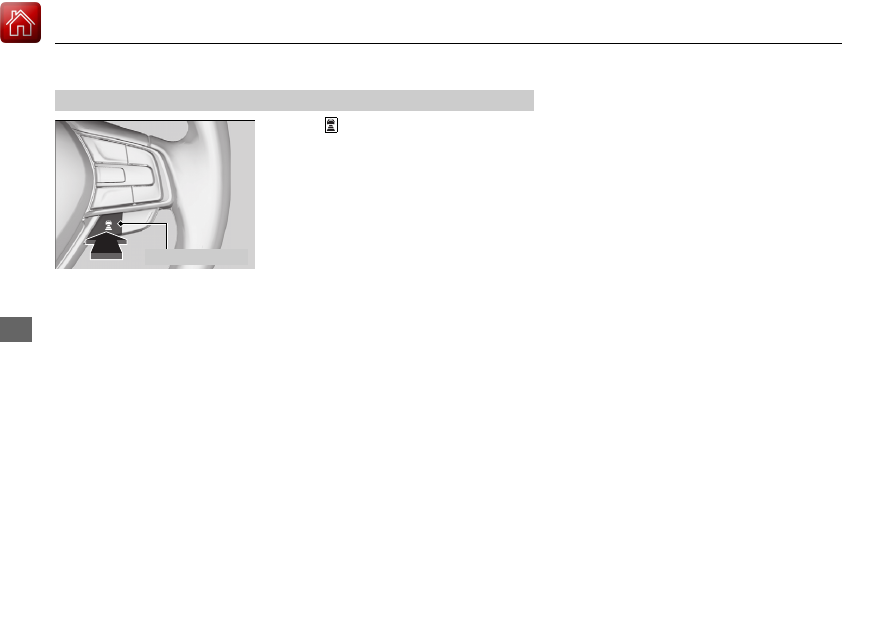Honda Accord (2019 year). Manual - part 35

544
uu
Honda Sensing®
u
Adaptive Cruise Control (ACC)
*
Driving
Press the (interval) button to change the
ACC following interval.
Each time you press the button, the following
interval (the interval behind a vehicle detected
ahead of you) setting cycles through extra
long, long, middle, and short following
intervals.
Determine the most appropriate following
interval setting based on your specific driving
conditions. Be sure to adhere to any following
interval requirements set by local regulation.
■
To Set or Change Following Interval
Interval Button